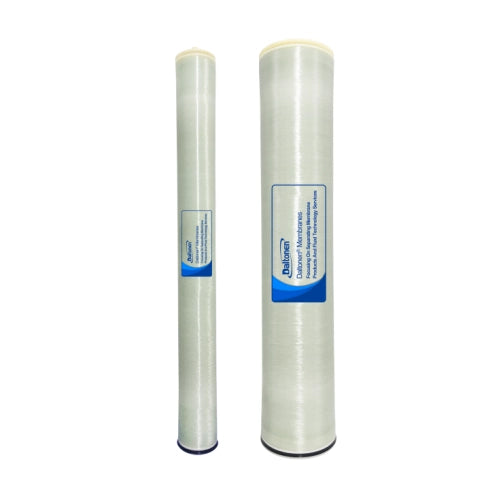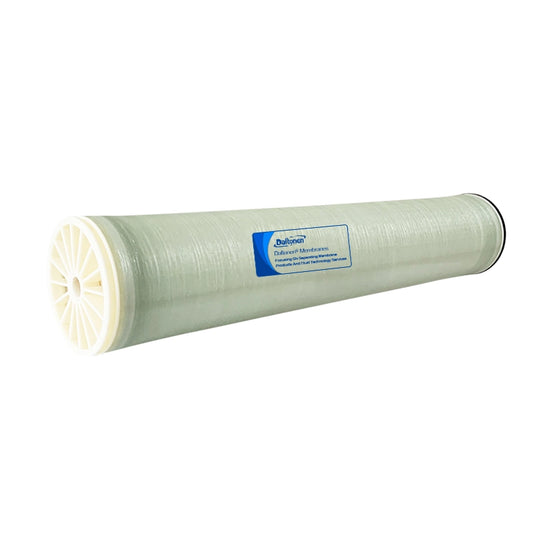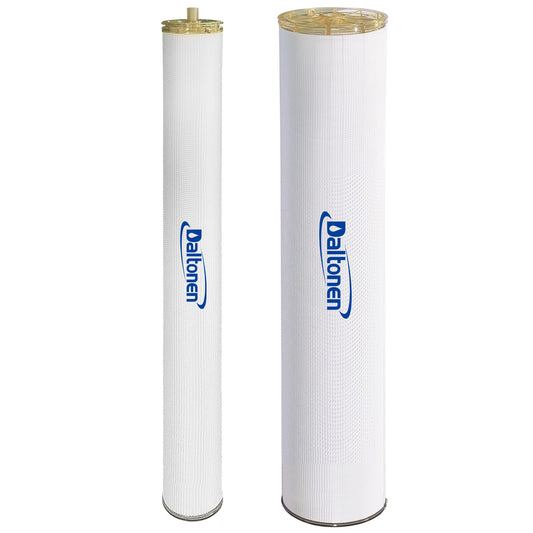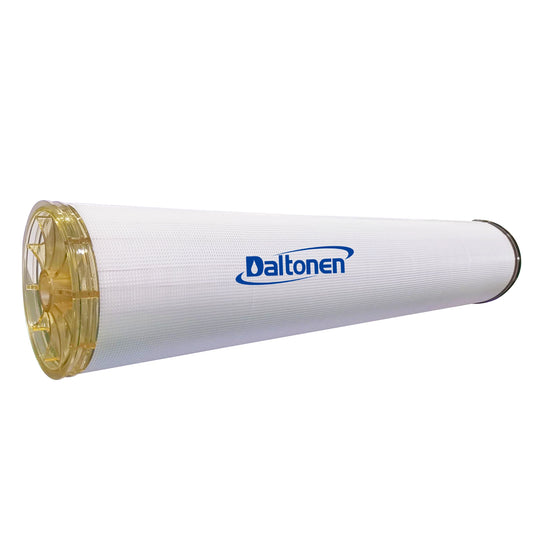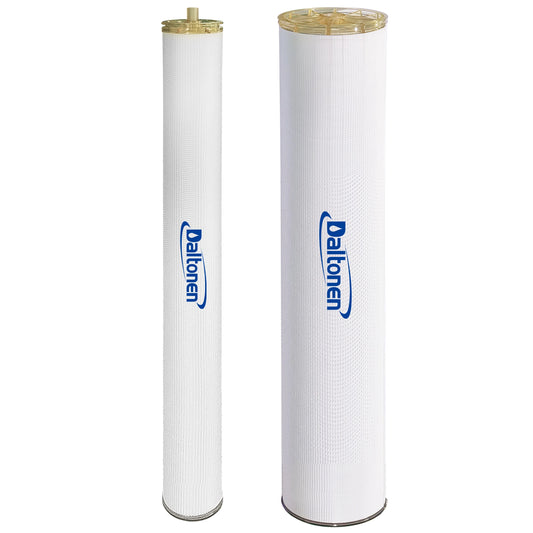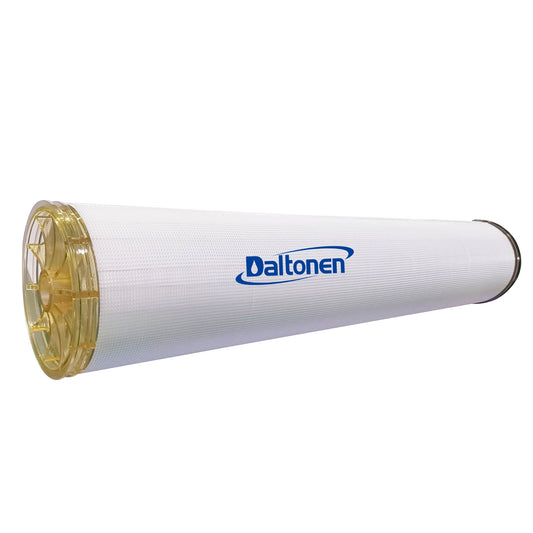How Reverse Osmosis Membranes Separate Silver Sulfate from Solution
How Reverse Osmosis Membranes Separate Silver Sulfate from Solution
1. Reverse Osmosis Membrane Separation Principle
1.1 General Principle
Reverse osmosis membranes are semi-permeable, separating solvents (usually water) from solutes (like silver sulfate) through selective permeability. With a pore size of 0.0001 - 0.001 microns, they can achieve a salt rejection rate of 90% - 99%, making them highly effective in processes like seawater desalination.

1.2 Physical and Chemical Mechanisms in Separation
Membrane Pore Structure and Selectivity
The nanoscale pore structure of reverse osmosis membranes is crucial for separation. The pores are smaller than silver sulfate molecules, preventing their passage. The membrane's surface chemistry, such as hydrophilicity or hydrophobicity, also affects solute adsorption and permeation, with hydrophilic surfaces enhancing water throughput and reducing solute adsorption.
Solute-Membrane Interactions
In solution, silver sulfate exists as Ag⁺ and SO₄²⁻ ions. Static electric effects between these ions and the membrane surface significantly impact retention. For example, a negatively charged membrane surface effectively retains positively charged silver ions. The size and shape of solute molecules or ions further influence their interaction with the membrane, with larger ones being less likely to pass through the pores.
Impact of Pressure and Concentration Gradient
Applied pressure drives solvent permeation through the membrane in reverse osmosis. Higher pressure increases solvent flow but risks membrane damage. The concentration gradient across the membrane causes solutes to diffuse towards the lower concentration side, but the membrane's selective permeability ensures solvent flow dominates, enabling effective separation. Controlling pressure and concentration gradient optimizes silver sulfate retention and water recovery in wastewater treatment.
2. Properties and Forms of Silver Sulfate in Solution
2.1 Chemical Properties of Silver Sulfate
Silver sulfate (Ag₂SO₄), a sulfate with a molecular weight of 311.799, is a white crystalline powder. It has a density of 5.45 g/cm³, a melting point of 652°C, and a boiling point of 1085°C. Slightly soluble in water (7.4 g/L at 20°C), it dissolves readily in ammonia, nitric acid, and concentrated sulfuric acid but not in ethanol. Light exposure causes it to darken due to decomposition. It is toxic and requires careful handling.
2.2 State of Silver Sulfate in Solution
In solution, silver sulfate dissociates into Ag⁺ and SO₄²⁻ ions, with the equilibrium reaction: Ag₂SO₄(s) ⇌ 2Ag⁺(aq) + SO₄²⁻(aq). Its solubility product constant (Ksp) is 1.4×10⁻⁵. When the ion product exceeds Ksp, precipitation occurs. Solution pH affects solubility, with acidity increasing it by generating HSO₄⁻ and shifting the equilibrium.
3. Separation Efficiency of Reverse Osmosis Membranes on Silver Sulfate
3.1 Factors Affecting Separation Efficiency
Membrane Characteristics
- Membrane Material: Different materials show varying efficiencies. Polyamide composite membranes, with high selectivity and chemical stability, achieve over 95% rejection, while cellulose acetate membranes, though cheaper, have lower rejection (80% - 90%).
- Membrane Pore Size: Smaller pores enhance retention. Pores in the 0.0001 - 0.001 micron range effectively retain silver sulfate, with a 0.0005-micron reduction from 0.001 microns improving rejection by 10% - 15%.
Operating Conditions
- Operating Pressure: Higher pressure boosts solvent flow and silver sulfate rejection but risks membrane damage. Increasing pressure from 1.5 MPa to 3.0 MPa raises rejection from 92% to 96%, with diminishing returns at higher pressures.
- Temperature: Rising temperature increases solvent diffusion but decreases rejection. Each 10°C temperature rise reduces silver sulfate rejection by 3% - 5%, necessitating careful temperature control.
Solution Properties
- Solution Concentration: Higher initial concentrations increase concentration gradients, promoting polarization and membrane fouling, reducing efficiency. Increasing concentration from 0.1 mol/L to 0.5 mol/L lowers rejection from 95% to 88%.
- Solution pH: pH affects solubility and ion forms. Acidic conditions (pH < 7) increase solubility and ion concentration, enhancing retention. Alkaline conditions (pH > 7) decrease solubility, risking precipitation and membrane issues. Raising pH from 3 to 7 drops rejection from 98% to 93%.
Other Factors
- Membrane Fouling: Organic matter, microbes, and inorganic salts can foul membranes, reducing efficiency. Regular chemical and physical cleaning restores performance.
- Flow Rate: Higher flow rates increase shear force, reducing pollutant accumulation and boosting efficiency. Increasing flow rate from 1.0 m/s to 2.0 m/s raises rejection by 5% - 8%.
3.2 Analysis of Solution Components After Separation
After reverse osmosis separation, the solution mainly consists of high-purity water (over 99% purity under normal conditions), with minimal impurities. Some silver sulfate (about 5% of the original concentration if rejection is 95%) and other impurities like chloride and sodium ions (with lower rejection rates) may remain. The solution's pH stays close to the feed, but slightly less acidic if the original solution was acidic. Electrical conductivity drops significantly (below 10 µS/cm from 1000 µS/cm), indicating reduced ion concentration. Dissolved oxygen levels remain nearly unchanged, while turbidity decreases substantially (below 0.1 NTU from 10 NTU).

4. Analysis of Factors Affecting the Separation Process
4.1 Impact of Operating Pressure
Operating pressure is crucial for solvent permeation. Increasing pressure from 1.5 MPa to 3.0 MPa raises silver sulfate rejection from 92% to 96%. However, excessive pressure can damage membranes and intensify polarization, reducing retention. Optimal pressure selection based on membrane and solution properties is essential.
4.2 Role of Solution pH
Solution pH influences silver sulfate solubility and ion forms, affecting membrane retention. Acidic conditions (pH < 7) increase solubility and ion concentration, enhancing retention (rejection drops from 98% to 93% as pH rises from 3 to 7). Alkaline conditions decrease solubility, risking precipitation and membrane issues. pH control is vital for optimizing separation efficiency.
4.3 Effect of Temperature on Separation
Temperature affects solvent diffusion and membrane selectivity. Each 10°C temperature rise reduces silver sulfate rejection by 3% - 5% due to increased solvent diffusion and membrane pore expansion. Higher temperatures also risk membrane chemical degradation. Optimal temperature range selection balances solvent flow and rejection.
5. Membrane Selection and Optimization for Separation
5.1 Suitable Membrane Types for Silver Sulfate Separation
Polyamide composite membranes are ideal for silver sulfate separation. With a pore size of 0.0001 - 0.001 microns, they achieve over 95% rejection, offering high selectivity, chemical stability, and pressure resistance for long-term operation. Cellulose acetate membranes, though cheaper, have lower rejection (80% - 90%) and are better suited for less demanding applications or as pretreatment membranes.
5.2 Methods to Optimize Membrane Performance
Membrane Material Modification
Chemical modification, like introducing hydrophilic groups or adding nanoparticles (TiO₂, ZnO), enhances membrane anti-fouling and water flux while maintaining high rejection (over 95% for silver sulfate).
Operating Condition Optimization
- Pressure: Choose between 2.0 - 3.0 MPa based on membrane and solution properties to balance rejection and solvent flow.
- Temperature: Operate within 20 - 30°C to balance solvent diffusion and rejection, avoiding excessive temperature-related performance drops.
Solution Pretreatment
Pretreating silver sulfate solutions (e.g., adding coagulants to remove suspended particles, adjusting pH to acidic) reduces membrane fouling and enhances separation efficiency.
Membrane Cleaning and Maintenance
Regular cleaning (chemical, physical) removes pollutants and restores membrane performance. Alternating between acidic (citric acid) and alkaline (sodium hydroxide) cleaning agents effectively removes organic matter, microbes, and inorganic scales, recovering membrane performance to over 90%. Physical cleaning (backwashing) also reduces pollutant accumulation.
6. Issues and Solutions in the Separation Process
6.1 Membrane Fouling Issues and Treatment Methods
Membrane fouling, caused by organic, inorganic, and microbial pollutants, reduces flux and rejection. Physical cleaning methods (backwashing, air scouring) are simple and low-cost for mild fouling. Chemical cleaning uses agents like citric acid (for inorganic scales), sodium hydroxide (for organics and microbes), and sodium hypochlorite (for biofilms) to remove pollutants, though material compatibility must be considered. Enzymatic cleaning offers eco-friendly pollutant degradation but at higher costs. Membrane modification (hydrophilic coating, nanoparticle addition) enhances anti-fouling properties.
6.2 Reasons for and Countermeasures Against Low Separation Efficiency
Low separation efficiency can result from large membrane pores, insufficient pressure, improper temperature, high solution concentration, or unsuitable pH. To address these, select high-quality membranes (like polyamide composites), optimize operating conditions (pressure of 2.0 - 3.0 MPa, temperature of 20 - 30°C), control solution concentration and pH (acidic, 3 - 5), pretreat solutions, and maintain membranes regularly through cleaning.
7. Conclusion
Reverse osmosis membranes are highly effective for separating silver sulfate from solutions, though their performance depends on various factors. The separation principle relies on the membrane's small pores and surface properties to retain silver sulfate. Silver sulfate's solubility and ion behavior in different conditions significantly impact retention. Optimizing operating parameters like pressure, temperature, concentration, and pH is crucial for enhancing efficiency. Polyamide composite membranes are preferred for their high performance, and methods like material modification, condition optimization, and solution pretreatment further improve results. Membrane fouling requires attention, with cleaning and modification strategies to maintain efficiency and longevity. Overall, reverse osmosis technology shows great potential in industrial wastewater treatment and resource recovery, with ongoing advancements promising even better performance and economic viability.


